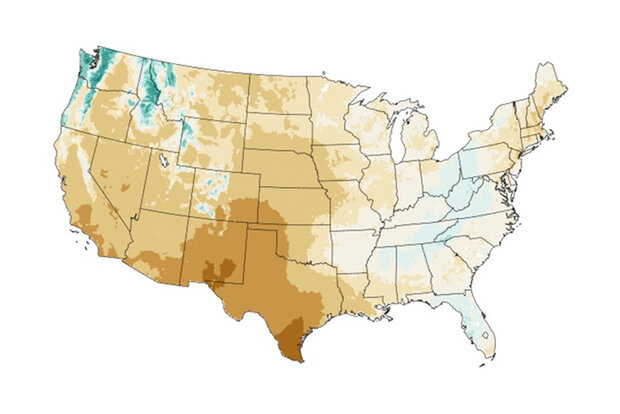
The new National Climate Assessment released this week by the Biden Administration not only lays out likely climate change impacts by region, but also says Oklahoma can expect drier conditions in the coming years.
“Climate change is here,” said Arati Prabhakar, director of the White House Office of Science and Technology Policy in the Biden administration.
“Whether it’s wildfires or floods or drought, whether it’s extreme heat or storms, we know that climate change has made its way into our lives and it’s unfolding as predicted.”
The report explained in that the Southern Great Plains where Oklahoma is located, already has seen increased hot, dry and windy conditions, especially in the Panhandles of Oklahoma and Texas and southwest Kansas. As a result, the report said the drier weather has reduced wheat yields proportionally to the number of hot-dry-windy hours.

“Producers also are expected to experience drier conditions and more frequent or intense drought by midcentury in western and southern parts of the region, lowering crop productivity or increasing irrigation costs,” predicted the assessment.
” By 2070 across a range of climate change scenarios to very high, the Southern Great Plains is projected to lose cropland acreage, as these lands transition to pasture or grassland.”
The assessment also stated that in the future, drier conditions will threaten agriculture and water supplies in parts of the Southern Great Plains. However, the northern and eastern boundies of the region, which include eastern Oklahoma are expected to receive more precipitation. The western regions of the state, along with Texas and southwest Kansas are expected to see a 4% decrease in total annual precipitation.

The report was critical of the energy industry in the region, noting how the release of greenhouse gases by fossil fuels contributed substantially to atmospheric warming. It said Texas led the nation in 2020 in emissions of carbon dioxide,double that of the next-highest emitting state. Texas also had the highest methane emissions in the same year and the Permian Basin leaks the largest amount of methane a year from any US gas-producing region.
Offsetting the fossil fuel production is the growth of renewable energy generation in Oklahoma, Texas and Kansas where wind farms are located. It is estimated the installed capacity of electricity generated by wind in Texas will increase from 31,100 MW in 2020 to 41,700 MW in 2025.
The assessment said the transition of a workforce from carbono-ointensive to a low-carbon economy is expected to affect some Southern Great Plains communities disporportionately.
“For Tribes and communities facing this transition, there generally is a lack of planning, infrastructure, financing, and workforce training in new careers (including in renewable energy) across the region.”
“Wind-turbine productivity across western Kansas, western Oklahoma, and the Texas Panhandle is projected to increase with climate change because of a more stable low-level jet stream—a regional atmospheric feature that generates strong winds at turbine height, particularly at night during spring and summer,” continued the assessment.





